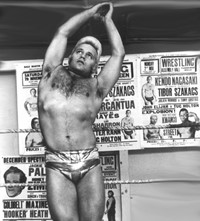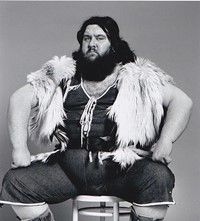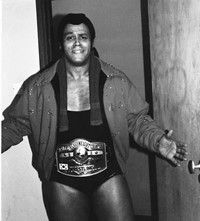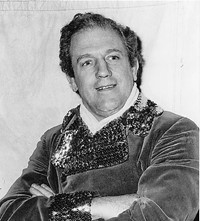Another Man previews a new book about the golden age of British Wrestling
- TextAnother Man
Wrestling is a strange yet compelling spectacle to witness. Part sport, part pantomime, it marries physical exertion and theatrical performance in equal measure. In the UK, wrestling experienced its golden age from the 1950s until the late 1980s – a period that formed the subject of an exhibition and now a book by curator and writer Kerry William Purcell. “This book aims to be a visual history of the outfits, the often genuine antagonism, the holds and moves, the larger-than-life characters, the role of women wrestlers, and the audience itself, which will all be showcased via photographs, original posters, magazines, flyers, the costumes, and much more,” he explains over email. These images were collected by Purcell himself and will sit alongside interviews with key figures from the scene, as well as fans. Here, alongside a preview of this book, which is currently still seeking backers, Purcell tells us more about this world and his personal relationship to it.
“As a child and teenager I was fascinated by the part sport, part entertainment world of wrestling. We forget, but at its peak it garnered audiences of over 12 million, and was a central part of our national life for nearly half a century. In this period, iconic figures such as Mick McManus and Pat Roach appeared in hundreds of UK town halls and theatres night after night, as well their weekly Saturday slot just before the football scores. If you watch the bouts on YouTube today, you will see something almost balletic about the matches. Some are choreographed like a Buster Keaton or Laurel and Hardy silent movie. But they are also incredibly tough. There is something about the performative quality, the audience interaction, the playing to type, but also knowing that being a working wrestler was a very hard life, that for me is absolutely mesmerising.
As a form of public entertainment, wrestling emerged from the earlier traditions of the music hall and circus ring. This heritage played a key role in the development of the characters, storylines, and audience participation, which were all unique to the sport. While wrestling was first broadcast on newly launched ITV station in 1955, as already noted, its established slot came about with the launch of World of Sport a decade later in 1965, and would last for 24 years before being axed by the then Director of Programmes, Greg Dyke, in 1989. The magazine format sports show was originally intended as a direct response to BBC’s Grandstand, and ‘The Wrestling’ became a central feature of its programming. Yet, in many ways, the balance between the sport/entertainment split was always an uncertain one, and the pull towards celebrity and spectacle that the commercial element of the sport demanded, would eventually be wrestling’s downfall (at least in the UK).”
Head here to help fund Grunts & Grapples: The Golden Age of British Wrestling, 1950-1990.















